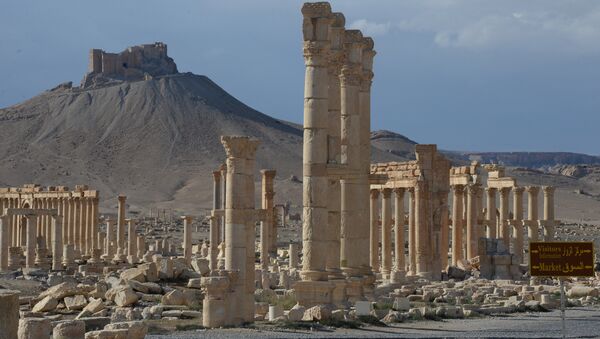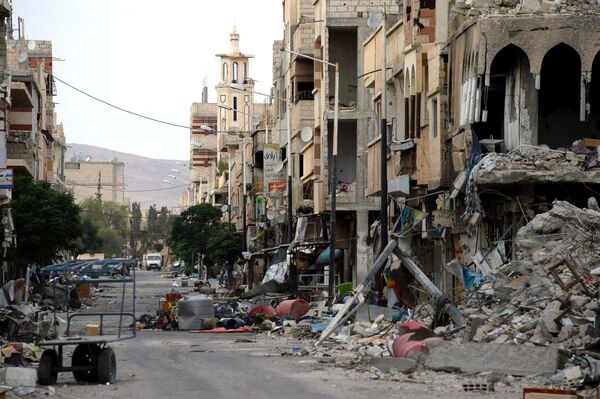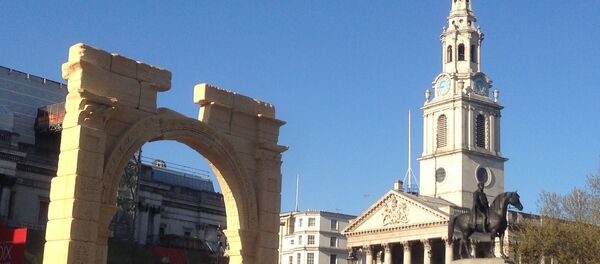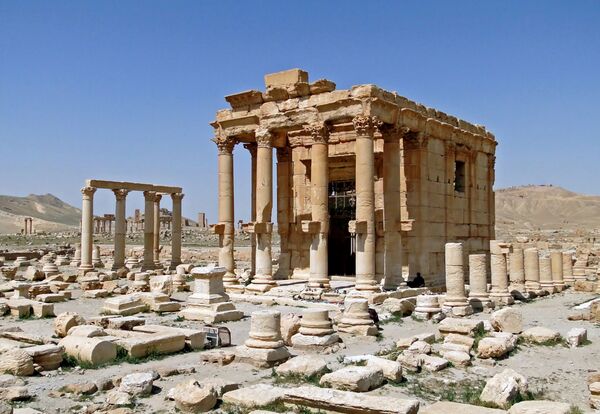“When we passed through town from the helipad, we saw that 99% of it was destroyed,” the director said.
He spoke about the historical sites saying that the famous Arc de Triomphe is a symbol of Palmyra. In the 1930’s it was restored by the French, but not very well because a lot of concrete was used and according to the director one of the aisles was completely recreated from local material.
“If the arch is to be restored, it will not be restoration but rather a construction that is, because it’s called a restoration when 50% of its original material is used. However, original details are no more than just 20% so 80% will be a total remake. If there were large blocks, they could be collected and rebuilt.”
Lesovoy further said that, “However, at present there are very little details because no explosives were spared. Several tons of explosives were placed under the large temples. Smaller explosives were laid in the middle, all that was enough to make the whole arch collapse.”
The director further explained that the arch was a symbol and it cannot be restored but can definitely be recreated. It is relatively easy to accomplish and can be done using drawings and photographs.
It could take up to one and a half years. The process would include dismantling the rubble, marking the debris and approving construction documents.
“There is no need of concrete, stone is needed for which there is local production, there is a lot around the ruined temples, even since historical times in the 3rd and 4th centuries this stone was being used,” Lesovoy said.
Looking at the other sites, Lesovoy noted that the Temple of Baalshamina was fully blown up, it crumbled but the big blocks survived so the temple can be restored.
“This is one of the priorities for the restoration of the object that it consists of up to 80-85% of the original fragments. In two years, it can be restored using bulldozer, crane and labor.”
According to the director, the Syrian specialists have the proper documentation with measurement drawings, so an accurate restoration of the temple is possible.
Talking about the technique that will be used for such restoration, Lesovoy said that there are special techniques, using a solution of lime and sand with the addition of various plasticizers and concrete mix, hence everything could be done there, on the spot.
“You can attach the stones to the so-called platforms, the surface of the stone is drilled and into the hole a metal pin is inserted which pushes another stone into the hole.”
Talking about the other sites, the director said that the Necropolis in Palmyra is almost completely destroyed, as it was blown up. He said that it is necessary to carry out additional research, excavation and analysis of the obstructions. “We could not do it, so to assess its condition right now is difficult.”
The director said that the amphitheater has been completely preserved, since that is where the militants executed civilians. When they were retreating, they did not have time to blow it up; Russian military has since cleared the area of mines.
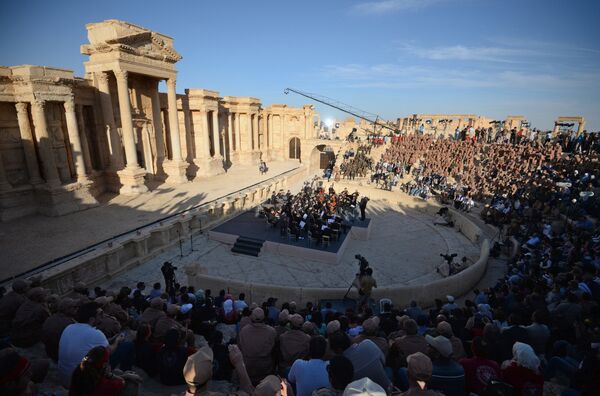
“The fortress of Qalaat al-Maani from the 17-18th centuries is destroyed,” he added.
Talking about the future of Palmyra, Lesovoy said, “When the memorandum will be signed with UNESCO and the contract with the Syrian side, Russian specialists will be able to start developing a program for the restoration of the monuments of Palmyra. At the conference in Germany, 21 countries expressed interest in restoration. After all, since the 18th and 19th centuries the French, Italians, Swiss, Poles have been engaged in studying these sites.”
It is well known that Syria will not fully pay for these works. Hence, a UNESCO fund, which has a certain amount of money, has been established and part of the costs will be taken up by the Russian Federation.

